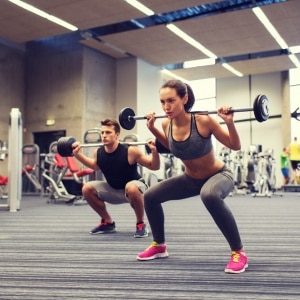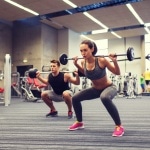
October 2018
When Hip Structure Compromises Hip Motion
A more recent diagnostic of hip deformity, along with a more recent surgical procedure to manage it (thanks to the work of a Nashville orthopedist), has helped explain a lot of athletes’, and even non-athletes’, groin pain. Called femoroacetabular impingement (FAI), it is essentially a recognition that some groin pains are due to bony deformations. And arthroscopic surgery for the hip evolved largely from the ubiquity of this disorder and the fact that younger, injured patients didn’t need a total hip replacement…yet.
An Australian group investigated whether or not those with and without FAI altered their biomechanics in such a way as to set them up for problems later. Two groups of 15 subjects were tested doing an unconstrained deep squat, where they could compensate for weakness or pain, and a constrained deep squat, where they were told to not compensate from the trunk or pelvis.

They found that FAI patients could squat as deep as healthy controls but compensated by shifting their weight to the unaffected leg and/or flexing less at the hips and trunk.
The authors acknowledge that, for athletes especially, these kinds of compensations may enable further function. However, the “long-term unfavorable consequences” could impact the hip’s structural integrity. It could also impact the spine as deeper flexion is accompanied by more spinal flexion, putting it at risk.
The issue with FAI in the younger population is, will surgery reduce or delay the need for a replacement. This is still a big unknown. More research and proper therapies are needed before answers can be offered.
ACSM Sports Med Bulletin, Dec. 2018
Does Stretching Prior to Athletic Activity Impact Performance?
A recent article attempted to clear up a major controversy in the sports world: does stretching during a warm up affect subsequent athletic performance? A multinational group studied 20 male team-sport athletes performing each of 3 types of warm up on separate days: dynamic, 5-second static and 30-second static stretches, plus no stretching, before performing various athletic tests such as sprint, jumping, and agility. They also measured flexibility and “post-warm-up participant outcome expectations”, to see if they felt the warm up helped, hurt or had no effect on performance.
In essence, the results demonstrated that the pre-participation warm ups “did not detectably influence flexibility or maximal vertical jump, sprint running acceleration, or charge of direction [agility] test performances compared” to no stretching. In fact, test reliability was deemed good to excellent for the sprints and jumps, and moderate for the agility, “despite the stretching component of the warm-up” differences.
Their conclusions, the authors write, are that short- or long-term, but reasonable-length, stretching as part of a dynamic warm up routine prior to athletic activity will not have a negative effect on the latter. Studies have shown that excessive stretching followed by a strength or power test does adversely affect performance. Most others have comported with this study showing that short stretches do not. And yet, the subjects themselves, aware of the negative studies, believed they’d do better without the stretching. So if expectations influence performance, then minimize stretch durations. Otherwise, don’t worry about it. MSSE June 2018
Tid Bits
A study in the Clinical Interventions in Aging found that “obese, non-sarcopenic” (that is, they’d retained muscle mass with aging) subjects did better on cognitive testing that non-obese individuals with sarcopenia. Those who were obese and sarcopenic had the highest likelihood of cognitive decline. The authors suggested that retaining muscle mass as you age may be protective against cognitive decline. Tufts Health & Nutrition Letter 10/18
A multi-national study compared the results of taking a baby aspirin among 19,114 seniors – minimum age 65 for black Americans, 70 for white Americans and Australians – for 4.7 years on average. At the end of the study period, 90.3% of aspirin takers were still alive; 90.5% of non-aspirin takers were still alive. Rates of cardiovascular disease and incidents and of physical disability and dementia were similar. But hemorrhagic events occurred more frequently in aspirin takers, leading the researchers to question the idea of healthy older adults taking prophylactic aspirin. NBC News, Sept. 16, 2018
With CTE – chronic traumatic encephalopathy – the disorder most associated with football players, in the news so frequently, researchers are vigorously studying what the best clinical tests are for determining readiness to return to play. Balance tests have proven less precise largely because young athletes tend to have good balance. But tandem walking – where the heel of the front foot touches the toes of the back foot – was found by one multi center study to differentiate concussed athletes better than the BESS (balance error scoring system) test. Within 48 hours post-concussion, the tandem gait test was performed more slowly by injured NCAA athletes whereas the BESS test was indistinguishable from baseline scores or those of control subjects. MSSE June 2018















